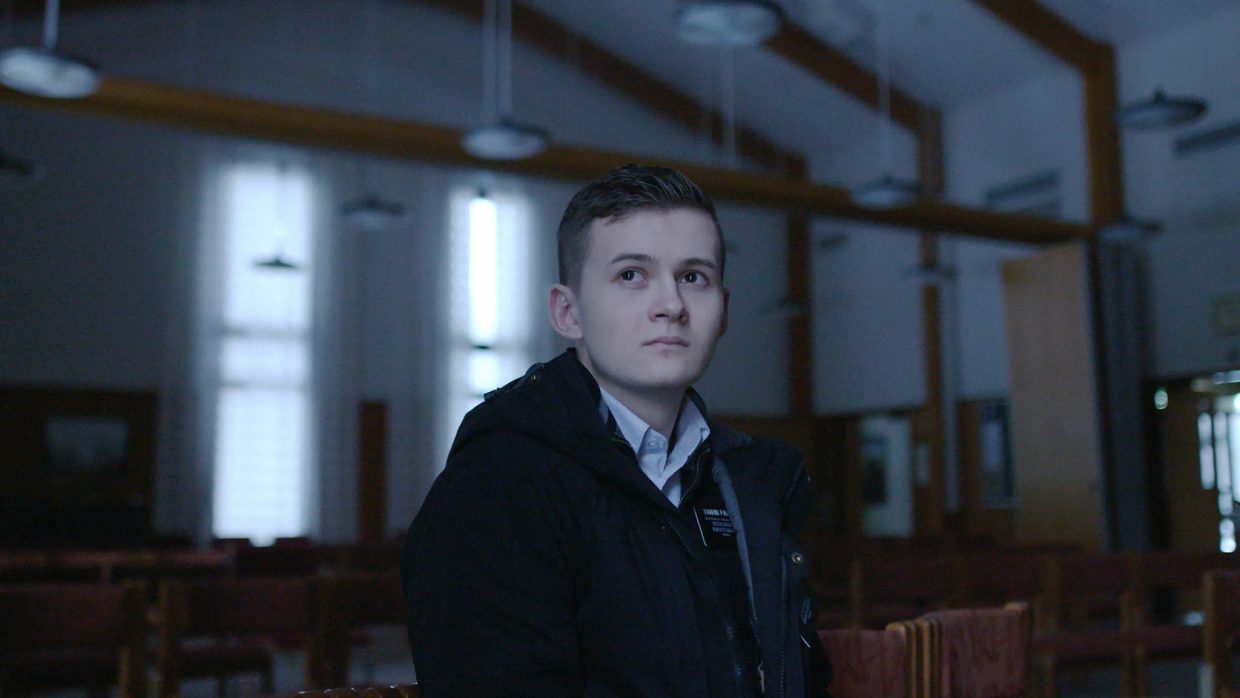 Back to selection
Back to selection
“I’ve Always Loved the Editing Style in a Lot of 1970s American Films”: Editor Suvi Solja on The Mission
 The Mission. (Photo: Antti Savolainen)
The Mission. (Photo: Antti Savolainen) The Mission focuses on four missionaries of the Church of Jesus Christ of Latter-day Saints working in Finland. In addition to the often frustrating day-to-day missionary work, director Tania Anderson also captures the missionaries on the eve of their departure, during their Finnish language lessons and on their welcomes home. Editor Suvi Solja discusses the challenges of piercing the nonchalant façade of the subjects and the decision to include a voiceover in the film, as well as why she frequently watches the opening of Bob Fosse’s All That Jazz.
Filmmaker: How and why did you wind up being the editor of your film? What were the factors and attributes that led to your being hired for this job?
Solja: I had previously edited a feature documentary directed by one of The Mission‘s producers, and I was also recommended by another editor colleague of mine to The Mission‘s director, Tania Anderson. I had a meeting with Tania and really liked her approach to the film’s subject matter. From there, we cut the first demo together in 2018 and hit it off and ended up doing the whole movie together.
Filmmaker: In terms of advancing your film from its earliest assembly to your final cut, what were your goals as an editor? What elements of the film did you want to enhance, or preserve, or tease out or totally reshape?
Solja: My goal was to build tension out of hundreds of hours of footage of these happy-go-lucky missionaries. I wanted to find enough tension for the movie to keep the viewer engaged but also balance it with warmth and humor. The director had a strong vision about not being too pro- or too anti-Church, so it was important to keep that balance so the viewer could decide for themselves.
Filmmaker: How did you achieve these goals? What types of editing techniques, or processes, or feedback screenings allowed this work to occur?
Solja: For a long while we questioned whether voiceover should be used. It was clear from the start that interview footage would not be shown (or shot) but voiceover was on the fence for a long time. But we found that without the voiceover we wouldn’t be able to pierce that outer layer of these seemingly always happy missionaries and ended up going with it.
We found humor in the little quirks of our protagonists and their cultural clashes with the Finns and used these shorter more comedic scenes to also balance the overall rhythm of the film. We were worried that some of the humor would only work with a Finnish audience, so we also got feedback from non-Finns.
Filmmaker: As an editor, how did you come up in the business, and what influences have affected your work?
Solja: I started working freelance as an assistant editor in 2010 after my second year of film school and continued to do so until 2015, when I slowly started to take on less assistant editor work and more editing work. Now I work as an editor, and The Mission is my third feature film. I’ve always loved the editing style in a lot of 1970s American films. It’s very simple, decisive and confident. Sometimes if I get “editor’s block,” I watch the opening sequence to All That Jazz and it inspires me and helps me move along.
Filmmaker: What editing system did you use, and why?
Solja: I used Adobe Premiere Pro version 14.0 simply because it’s the software I’m most comfortable with using at the moment. I used to work on Avid, but in Finland most productions companies use Premiere, so I made the switch to Premiere a few years ago.
Filmmaker: What was the most difficult scene to cut and why? And how did you do it?
Solja: There wasn’t any one specific scene that was difficult, but the sequence of the missionaries arriving to Finland and starting their missionary work was very challenging. We had introduced the four protagonists in their own separate scenes and then brought them together at the Mission Training Centre. Now it felt like we needed to see them on their own again as they got sent to different parts of Finland. But no one protagonist had a starting struggle strong enough to carry the whole sequence. We also didn’t want to lose any one person for too long of a period. The sequence felt too long and too short at the same time. I must have made over 40 versions of it. Finally, we decided to ignore it for as long as we could. And when we came back to it we stripped it to its bare bones, planned out the emotional arc and build it back up. After that, there was some minor tweaking but no more completely new versions were needed.
Filmmaker: Finally, now that the process is over, what new meanings has the film taken on for you? What did you discover in the footage that you might not have seen initially, and how does your final understanding of the film differ from the understanding that you began with?
Solja: At first the film seemed to be a look into a world we haven’t seen before, but it ended up being a much more universal story of young people finding themselves under pressure from their communities to be and act a certain way.
